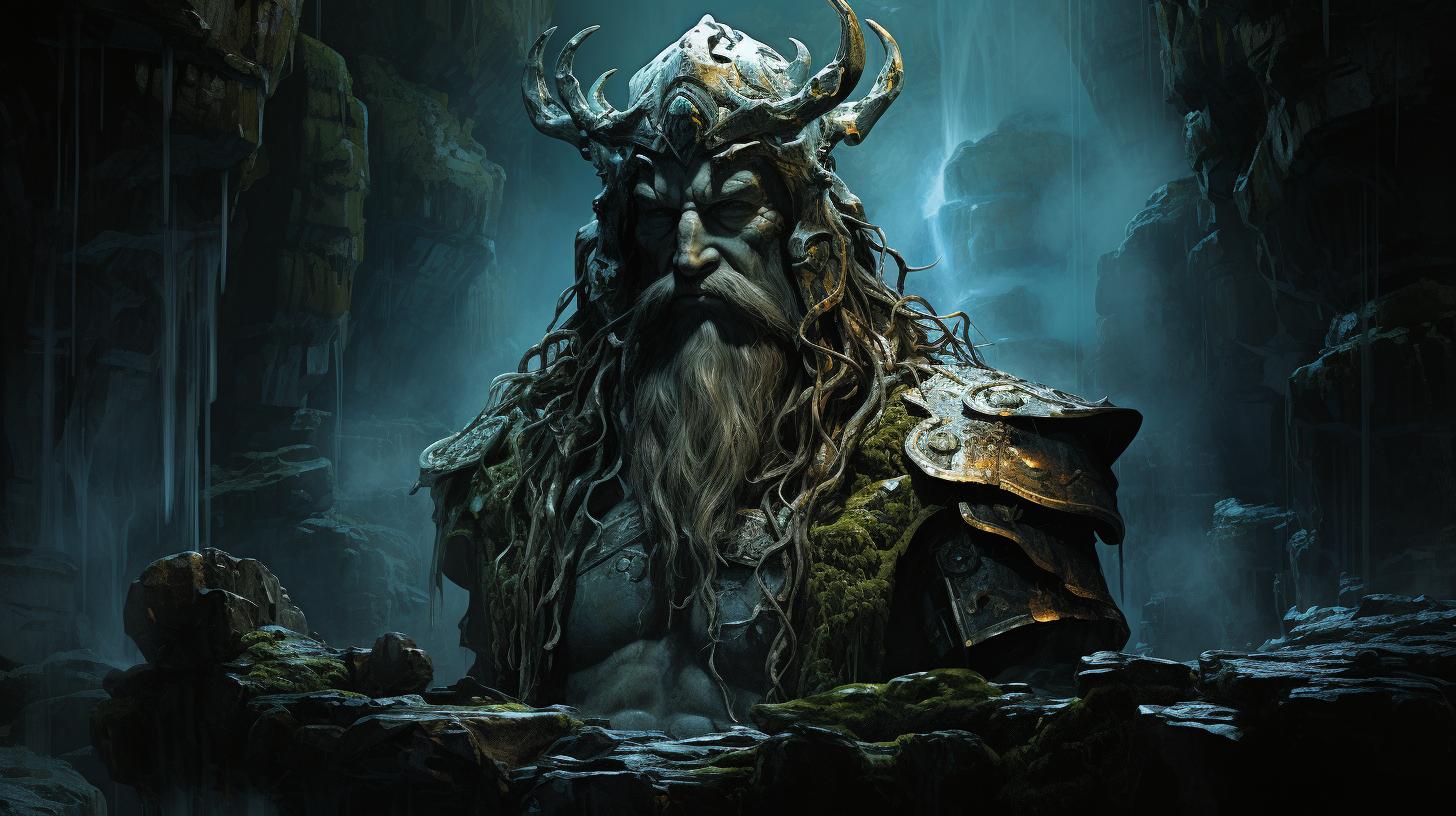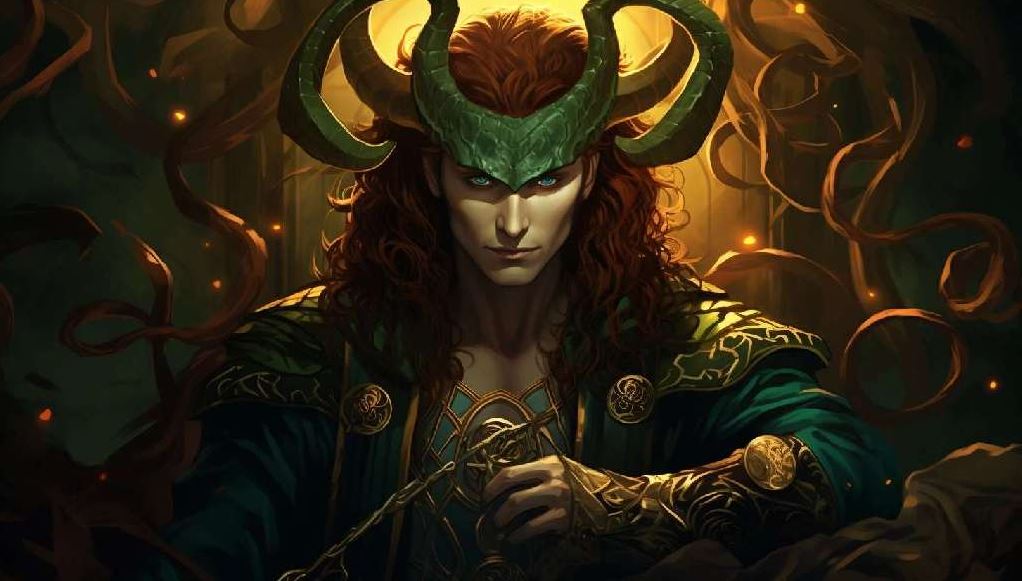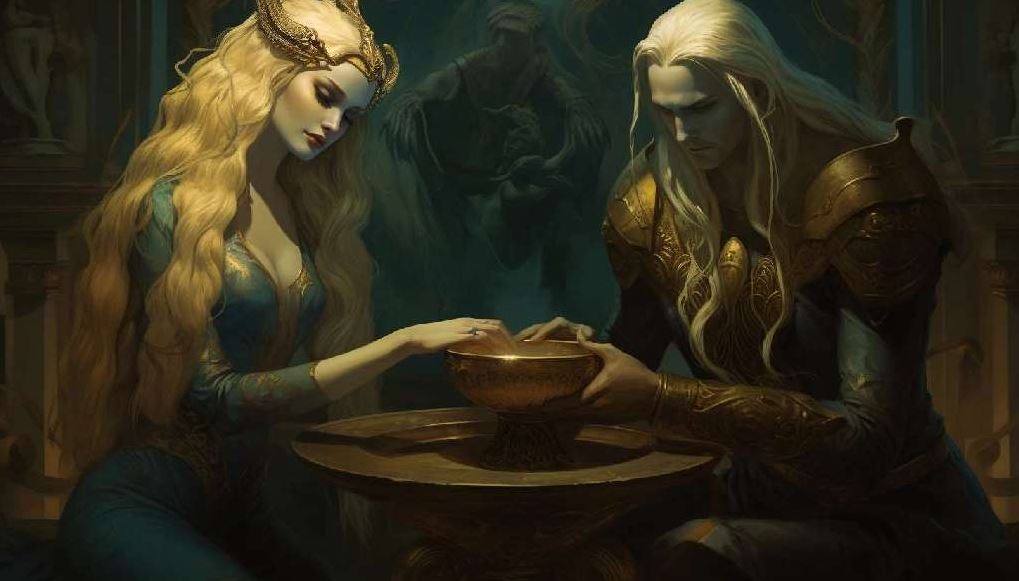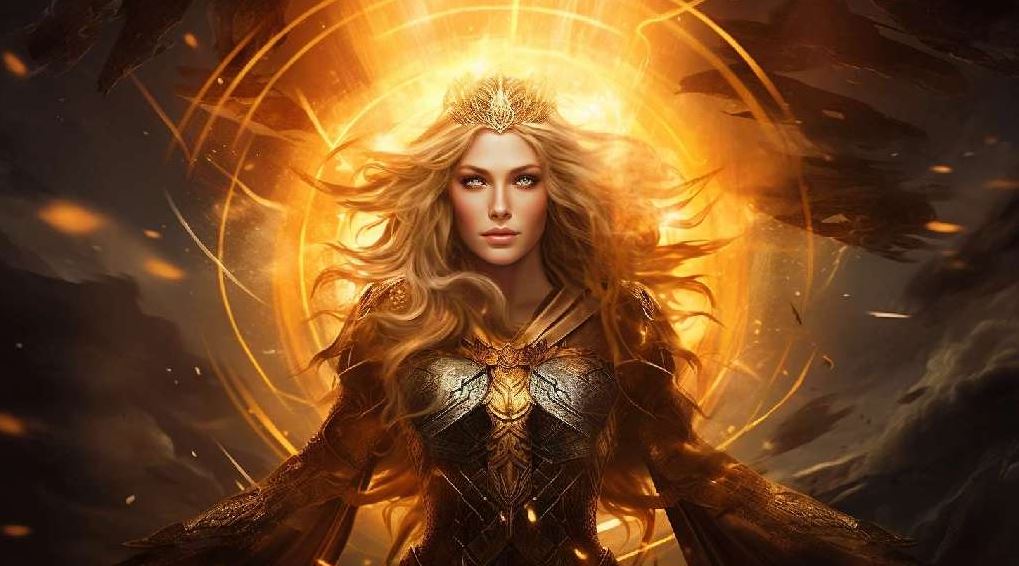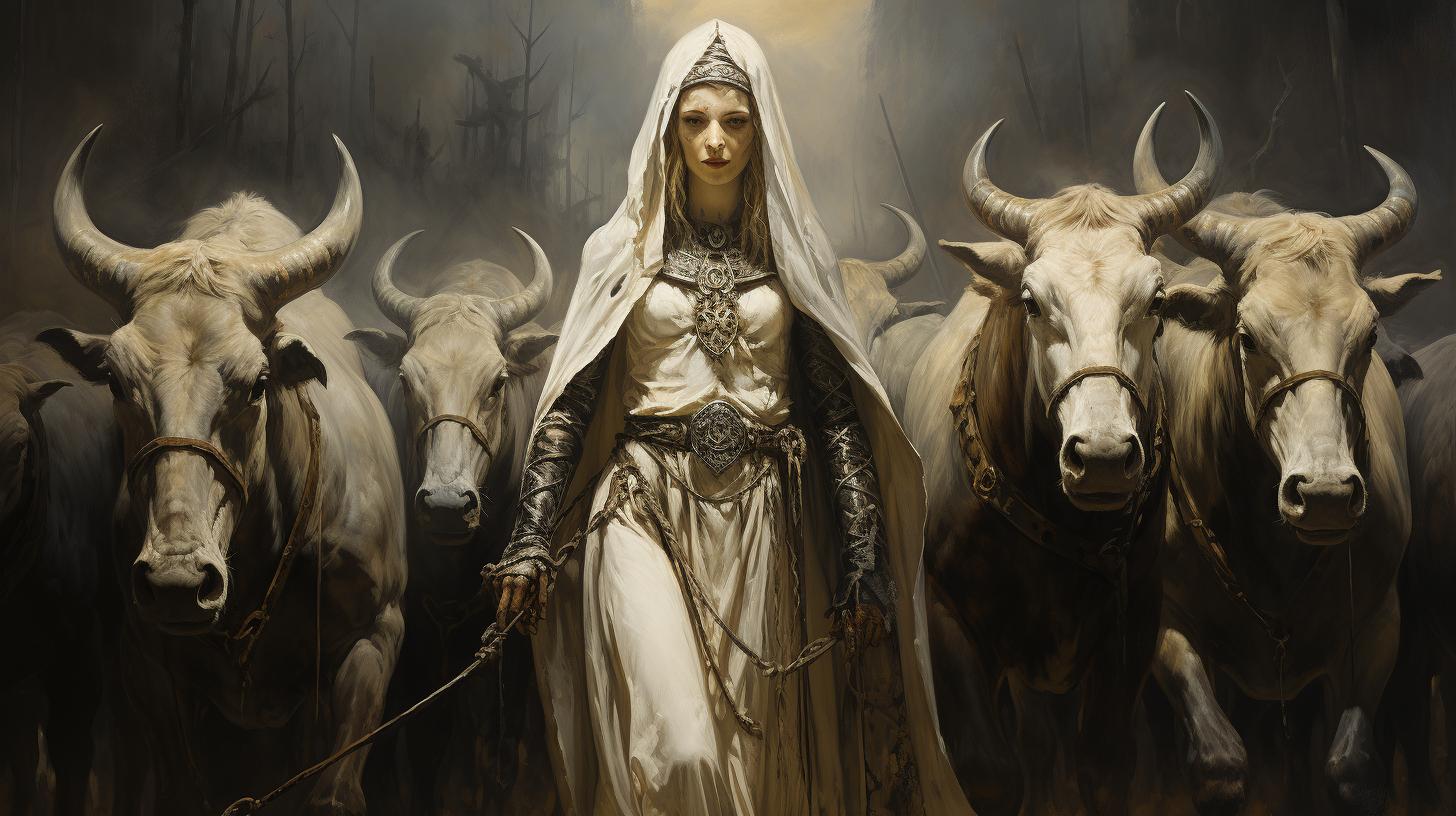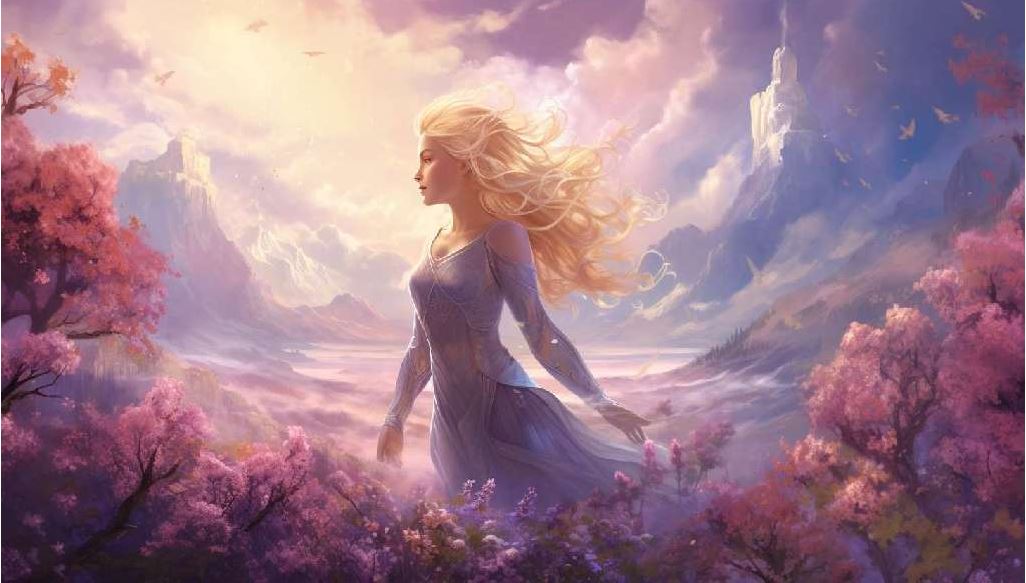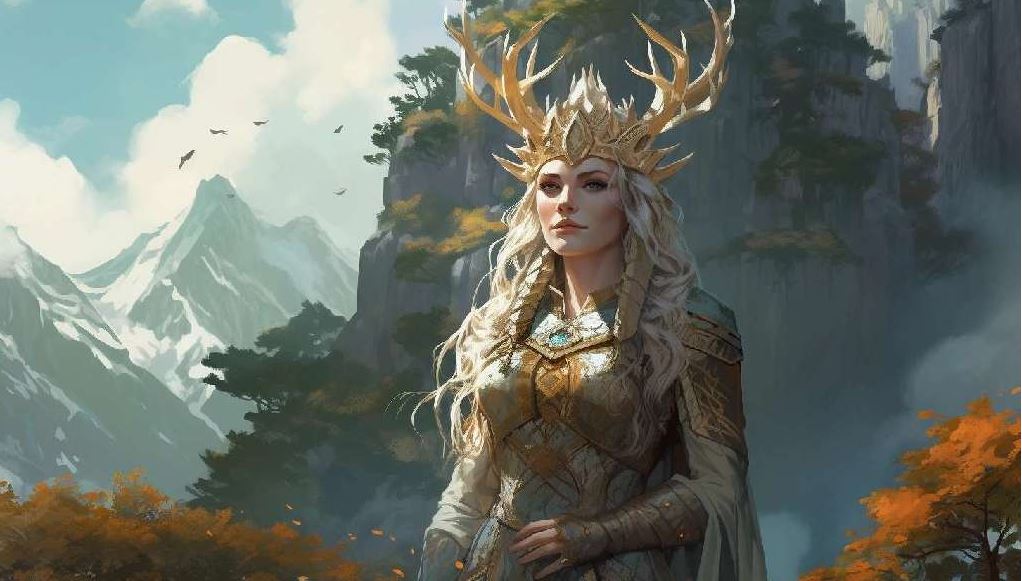Norse Goddess Ran: The Powerful Marine Divinity
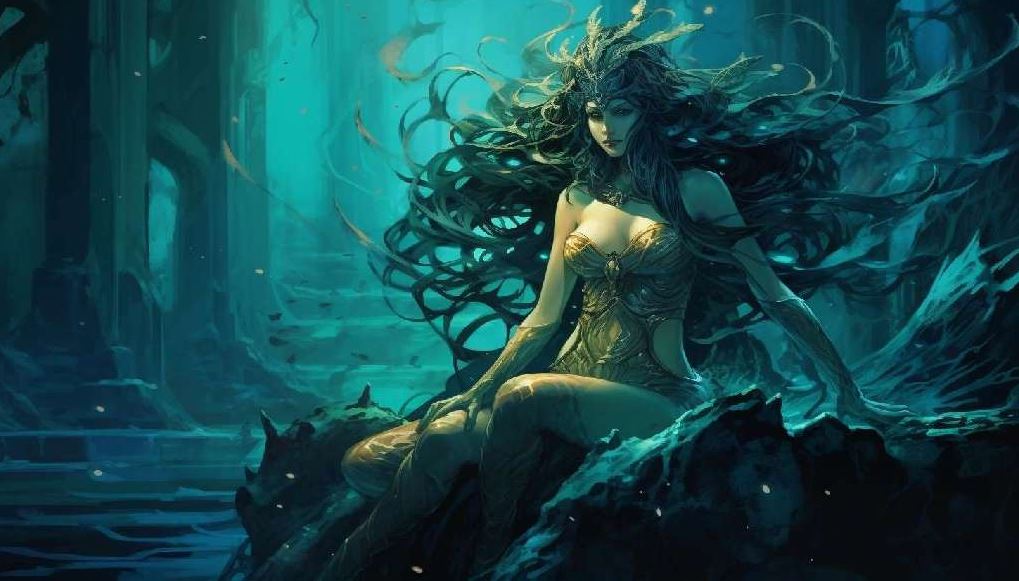
Norse Goddess Ran, the powerful marine divinity of Norse mythology, personifies the vast and mysterious depths of the sea. Married to Aegir, the god of the ocean, Ran dwells in their underwater hall, Aegirheim.
With her striking appearance and infamous net, Ran captures sailors, leading their souls to Aegir‘s feasting hall. She is closely associated with storms at sea and is believed to create tempests.
Ran’s connection with Hel, the goddess of death, further adds to her formidable presence in Norse mythology and literature, making her an intriguing figure to explore.
Norse Goddess Ran: The Powerful Marine Divinity
In Norse mythology, Ran is revered as a formidable figure, embodying the immense and awe-inspiring power of the sea. Let’s explore the captivating mythology surrounding this enigmatic goddess, delving into her appearance, attributes, and significant role as a sea deity.
Mythology of Norse Goddess Ran
Ran holds a significant place within Norse mythology, often portrayed as the personification of the depths and mysteries of the sea. She reigns over various aspects related to water, including freshwater, lakes, rivers, storms at sea, springs, and the ocean itself.
As the mother of nine daughters who symbolize waves, Ran is credited with creating tempestuous marine storms in the northern oceans.
Appearance and Attributes of Ran
Ran possesses a mesmerizing beauty that captivates even as it emanates an aura of darkness. Her greenish-blue skin and long, dark hair add to her allure, but her striking features, such as her sharp teeth and claw-like fingers, hint at her sinister nature.
With a smile that chills the blood, she can shapeshift between her human form and that of a haunting siren.
Ran’s Role as a Sea Goddess
As we delve further into the depths of Norse mythology, we uncover the intricate relationship between Ran, Aegir, and the captivating tales of their underwater realm, Aegirheim. Discover how Ran’s influence extends to the creation of storms and her connection with Hel. We’ll also explore Viking beliefs surrounding the presence of Ran and the maritime practices associated with securing a safe passage.
Join us on this journey into the depths of Norse mythology and uncover the powerful legacy of Ran, the formidable goddess of the sea.
Ran’s Relationship with Aegir: The God of the Sea
Ran, the Norse goddess of the sea, is married to Aegir, the god of the ocean. Their union creates a formidable partnership that holds immense influence over the realm of water in Norse mythology.
Together, Ran and Aegir reside in their underwater hall called Aegirheim, where they hold grand feasts and gatherings.
Aegir‘s role as the god of the sea complements Ran’s domain as the goddess of the depths, freshwater, lakes, rivers, and storms at sea. Their intertwined powers ensure their dominion over all aspects of the marine world.
Ran’s association with Aegir gives her a unique position among the Norse deities, making her presence fundamental to the mythology surrounding the sea.
Within Aegirheim, Ran and Aegir host banquets for drowned sailors whose souls have been captured by Ran’s net. These gatherings serve as a gathering place for not only the souls of the drowned but also for the gods and goddesses of the Norse pantheon.
This spiritual union between Ran and Aegir showcases their symbiotic relationship and further solidifies their influence over the sea.
The dynamic between Ran and Aegir underscores their joint control over the vast and unpredictable realm of the ocean, making their relationship an essential aspect of Norse mythology and its portrayal of the sea’s power and mystery.
The Salón of Aegir and Ran: Aegirheim
Aegirheim serves as the magnificent underwater abode of the Norse sea deity couple, Aegir and Ran. Located in the depths of the sea, this grand hall is a realm of wonder and myth.
Aegirheim stands as a testament to the power and dominion that Aegir and Ran hold over the ocean realm.
Stepping into Aegirheim is like entering a surreal world, as its enchanting beauty captivates all who witness it. The walls shimmer with iridescent hues, and the air is filled with an ethereal essence.
The essence of the sea itself seems to permeate the entire space, evoking a sense of both awe and reverence.
Aegirheim comes alive during grand feasts hosted by Aegir and Ran. These legendary gatherings bring together a myriad of creatures from the depths of the ocean. The hall resonates with lively conversations, laughter, and the enchanting melodies of sea-inspired songs.
- The banquet tables are adorned with lavish displays of marine delicacies, tempting the palate.
- Colorful coral formations provide seating for the guests, creating a truly immersive experience.
- A mesmerizing display of marine life, from graceful sea creatures to majestic underwater beasts, enhances the ambience of the hall.
Aegirheim stands as the heart of the sea, a place where the power and beauty of the ocean meet in harmonious union.
It is here that Aegir and Ran reign supreme, presiding over their watery domain and orchestrating the ebb and flow of the tides.
The Creation and Control of Storms: Ran’s Influence
Ran, the powerful Norse goddess of the sea, holds dominion over the turbulent forces of nature, particularly storms and tempests. Her connection with weather and natural phenomena is undeniable, as she weaves her influence throughout the realm of the ocean.
Ran’s Connection with Weather and Natural Phenomena
Ran’s association with storms in the sea is widely acknowledged, as she possesses the ability to conjure tempests and unleash their destructive might. Her presence is felt in the raging winds and crashing waves, as she exerts her control over the turbulent elements.
Sailors often invoked her name, seeking protection and guidance during treacherous weather conditions.
The Nine Daughters of Ran: Personification of Waves
As the mother of nine daughters, Ran personifies the ebb and flow of the ocean’s waves. Each daughter represents a unique facet of the sea, embodying its vastness and undulating power.
From gentle ripples to towering swells, their combined force reflects the ever-changing nature of the water, reminding sailors of Ran’s dominion over the tumultuous seas.
Ran’s Net: The Weapon of Choice
The net is the primary weapon used by Norse goddess Ran to capture unsuspecting sailors and drag them down into the depths of the sea. This tool, woven with intricate designs and sturdy fibers, allows Ran to ensnare her victims with precision and power.
Net as a Means of Capturing Sailors
Ran skillfully casts her net over ships, entangling the sailors in its intricate mesh. The net represents her power over the vast ocean and serves as a symbol of her dominion.
Once caught, the sailors have little chance of escaping her grasp, as the net tightens around them with each desperate struggle.
Souls of the Drowned: A Journey to Aegir‘s Hall
Once the sailors are caught in Ran’s net, their fate is sealed. Ran drags them down into the watery depths, where they find themselves transported to the hall of Aegir, her husband.
In this underwater realm known as Aegirheim, the drowned souls join Aegir‘s feasting hall, forever partaking in eternal banquets.
Amongst the wreckage of lost ships and the haunting beauty of the sea, Ran’s net becomes an instrument of both dread and fascination. It symbolizes her mastery over the unforgiving waters and serves as a reminder of the perils that await those who dare to challenge the power of the Norse goddess of the sea.
Ran’s Relationship with Hel: The Goddess of Death
Ran, the powerful marine divinity, shares a unique bond with Hel, the goddess of death in Norse mythology. They are considered allies, working together to govern the realm of the deceased.
Ran acts as a guide, sending the souls of the drowned to Hel‘s domain, Helheim.
The partnership between Ran and Hel reinforces the idea of the ocean as a gateway between life and death. As sailors meet their watery demise, Ran collects their souls and ensures their journey to Hel‘s realm.
This relationship highlights the intricate interconnectedness of the realms of the gods.
While Ran’s primary role is associated with the sea and storms, her connection with Hel emphasizes the transition and passage between realms. It reiterates the omnipresence of death in Norse mythology and the importance of appeasing Ran and Hel for a safe journey to the afterlife.
Viking Beliefs and Practices: Gold for Safe Passage
In Viking culture, it was believed that carrying gold was a key to ensuring a safe passage through treacherous waters under the watchful eyes of Norse goddess Ran. Sailors would adorn themselves with gold, considering it a symbol of good fortune and protection against the perils of the sea.
When facing storms or unpredictable maritime conditions, sailors would distribute gold among the crew, following the belief that offering this precious metal would appease Ran and guarantee a safe journey.
It was thought that by possessing gold, the sailors would secure a place in the splendid hall of Aegir and Ran, where glorious banquets were held for those who met their end at sea.
However, the power of gold was not limitless. Ran would eventually grow tired of claiming souls lost to the sea, sending them to the realm of the goddess Hel. To placate Ran during tumultuous times, sailors would also resort to casting their gold into the depths of the ocean while uttering prayers, seeking to calm the fierce deity and ensure a smooth passage.
This unique tradition of carrying and offering gold reflects the deep-rooted beliefs and superstitions of the Viking seafarers who relied on the favor of Ran for their safety and survival on their perilous journeys across the sea.
The Presence of Ran in Norse Literature
Ran, the powerful marine divinity, holds a significant place in Norse literature, leaving her captivating mark on ancient texts. She is prominently featured in both the Poetic Edda and the Prose Edda, two important sources of Norse mythology.
Ran in Poetic Edda: The Poem Sonatorrek
In the Poetic Edda, Ran appears in the compelling poem Sonatorrek. This poem recounts the tale of a drowned man who tragically lost his life during a sea storm. Ran’s formidable net is portrayed as the means by which she claims his life, drawing him into the depths of the ocean.
The poem delicately portrays the overwhelming power and emotion associated with her actions.
Ran in Prose Edda: Snorri Sturluson’s Accounts
Snorri Sturluson, the renowned Icelandic scholar, provides detailed accounts of Ran in the Prose Edda. He extensively discusses Ran’s role as the goddess of the sea and her relationship with Aegir. Snorri emphasizes her influence over storms and her alliance with Hel, the goddess of death.
By shedding light on Ran’s connections and endeavors, Sturluson adds layers of depth to her character and highlights her importance in Norse mythology.
The references to Ran in both the Poetic and Prose Edda highlight her captivating presence and the utmost respect she commanded among the Norse gods and goddesses. Through these ancient texts, we gain invaluable insight into the vastness of her power and the profound impact she had on Norse culture and beliefs.
…











